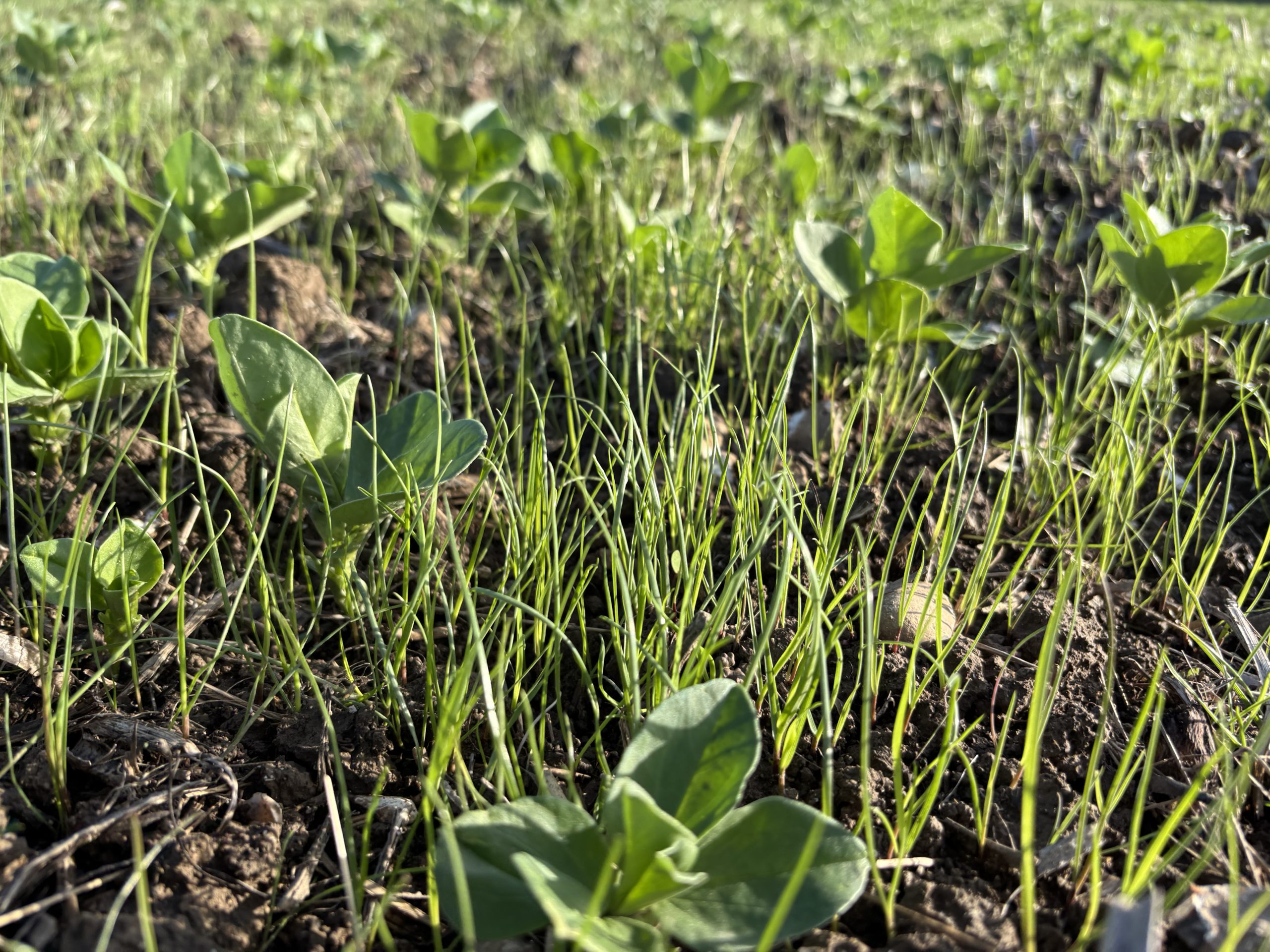From Kent to South West Wales drilling of winter crops is near completion but agronomists are keeping a close eye as grass weeds continue to germinate.
In this BASF blog two agronomists – Chris Taylor from Down To Earth Agronomy and Simon Roberts from CCC Agronomy – discuss cultivations, drilling and grass weed control.
Simon is the managing director and senior agronomist at CCC Agronomy. Known for his collaborative and technical approach, he works with farms across Kent and East Sussex.
Chris is an agronomist with a passion for sustainable agriculture and a specialism in regenerative farming practices. Between his agronomy and farm consultancy services he covers over 10,000 acres across Gloucestershire, Wiltshire, Somerset, Herefordshire and South Wales.
SIMON ROBERTS:
“Autumn 2025 couldn’t be more different to 2024. By the end of the week, all the winter wheat will have been sown.
“Grass weed seed return from last year was, on the whole, low. There were a few fields which saw some, but it had very low dormancy. In some cases, the grass weeds germinated before harvest due to a break in the dry conditions.
“However, this doesn’t mean we have been able to lower our guard this autumn. We are always dealing with the last five or six years’ worth of seed return, not just last year’s. Experts estimate that up to 90% of a weed’s seeds are in the soil profile, so as soon as the soil is disturbed, seed from previous years is exposed.
“Earlier drilling has meant that this autumn’s herbicide programmes have been designed for longevity by sequencing active ingredients. However, that is now shifting. Today, the approach is about prioritising the best actives where I know they will be applied. For those fields with black-grass and ryegrass that means Luximo + aclonifen at pre-emergence with a view to follow-up with Stomp Aqua + flufenacet + diflufenican.
“Luximo has performed well both in trials and in the field. Each year since its launch I’ve used more and more. Last year we had some of the best levels of grass weed control that we have ever had. We also had the best conditions for residual performance with effective stale seedbeds, later drilled crops and cool moist soil.
“This year, the South of the county has received more rainfall than the North. Here, the land has had to be worked harder to get a tilth and had a reduced flush of weeds prior to drilling.
“Despite this, many growers across the region have been able to establish two stale seedbeds before drilling and seedbeds are in really good order.
“This will help residual herbicide efficacy. The more even a seed bed, the better the seed depth, and fewer clods means better coverage for the residual chemistry.
“While earlier drilling means crops are safely in the ground, there are already visible patches of emerging black-grass and ryegrass within crops.
“In some cases, it has come through thick and fast. Although it takes a little time for residual chemistry to be taken up, and there are signs it is having an effect, I’ll still be keeping a close eye. If enough survives, it is highly likely that we’ll be spraying off the worst patches in the spring.”
Simon’s top tips for grass weed control
“There’s no silver bullet for grass weed control. Instead, it is about getting everything working together to reduce the seedbank.
“Moisture is needed for stale seedbeds, and weed seedlings should be sprayed off after germination peaks – that’s easier said than done when it comes to ryegrass which germinates over a longer period in comparison with black-grass.
“Then it is about getting the seedbed right, sowing seeds at the right depth, having moisture for the pre-emergence herbicides, stacking or sequencing active ingredients to get the best control and manage resistance. Attention to detail when applying the product also helps – 200L water volume, low drift alternating nozzles, boom height and forward speed play a part in placing the herbicide where it needs to be.
“The final part is about minimising seed return – this is not always a popular option but rogueing or spraying off any surviving patches of grass weeds stops seed return. At harvest, keep detailed maps of weed infestation ‘rating’ your fields – which ones ought to be drilled last next year? And which need a reset and are candidates for rotational ploughing?”
CHRIS TAYLOR:
“It’s been one of the nicer autumns. The early harvest saw crops come off fields in good conditions, with little damage to the land. The challenge has been getting grass weeds to chit during the dry weather.
“Although there was plenty of potential for stale seedbeds, little germinated until the beginning of September.
“Clients in the west of the region have been fortunate and had short showers that have delivered just enough moisture. On the other hand, those in the east, in Gloucestershire for example, have found themselves in a bit of a rain shadow. Unfortunately, this is also where we have the highest grass weed pressure.
“While the majority of growers have created good seedbeds with straw rakes or discs and rolls, it has been interesting to see some having success with catch crops too.
“Sowing of winter cereals started around 10th September and now 90-95% of the winter wheat has been drilled. Only the large contractors are left getting the final maize crops off fields and the winter wheat in.
“All things considered, control of grass weeds has been pretty good. One positive to the dry weather is that rain hasn’t hindered field work and as a result, drilling and pre-em applications have been timely.
“Bad black-grass and ryegrass areas have had, or are getting, Luxinum + Stomp Aqua at pre-emergence with a follow up planned at peri-emergence. I like the flexibility of Luximo. It’s now my third season using it and it is proving to be a very useful tool.
“While the weather has been rather kind this autumn, I can’t help feeling that we are due a lot of rain in the next couple of months.
“I’ll be keeping a close eye on crops, as they have been drilled so early, BYVD is obviously an issue. There’s also a lot of gout fly and wireworm about at the moment, and although there is not much activity now, I’ll also be watching out for slugs.
“Today, however, it feels that crops are set up nicely. I just hope it all stays well in the coming months.”
Chris’ top tips for controlling grass weeds
“My number one top tip for controlling bromes and black-grass is spring drilling. It makes a big difference and there a number of good options in this neck of the woods including pulses, spring barley and maize.
“Rotational ploughing is very useful too, if required – sometimes there is no need to intervene. If this tool is used too often, grass weed seed isn’t buried for long enough to denature. I like the mixed approach of keeping the grass weed seeds on the soil surface for the intervening five to seven years and then doing one big reset.
“Last, but definitely not least, is delaying drilling winter wheat and using appropriate seed rates to ensure you’ve enough plants per meter to suppress the weeds.”

